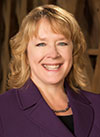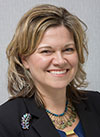
In Wisconsin, the number of people age 65 and over is projected to increase by more than 30 percent in the next 10 years or so.1 According to the Alzheimer’s Association, approximately 120,000 people in Wisconsin are living with Alzheimer’s disease in 2020; this number also is expected to increase significantly.2 Although individuals with Alzheimer’s disease or dementia comprise the majority of individuals receiving substitute care, these certainly are not the only conditions requiring long-term care. The median cost of a room in an assisted living facility in Wisconsin is $4,3503 , and in urban areas it is much higher.
While the need for care is growing, the availability of direct-care staff is at risk. There has been a 25 percent decline in the number of caregivers on the Wisconsin Nurse Aide Registry since 2012.4 Forty-two percent of long-term and residential care providers are facing a caregiver vacancy rate in excess of 25 percent.5
The convergence of increasing numbers of vulnerable people needing care with fewer people available to provide care is a crisis in the making that has been in the forefront in recent weeks. The concept of this article began before COVID-19, but the pandemic certainly affected both contributors’ outlook on the issue.
This article about the future of assisted living and long-term care is written as an interview with the two authors and from the perspective of care providers and recipients. The article continues the series on how lawyers can help older clients avoid or end elder abuse, which began in the January 2020 Wisconsin Lawyer.
Here are some questions the authors asked themselves and each other and their answers.
What is working and what needs to change?
Michelle: One of the things working well in a thriving, vibrant assisted living facility is a sense of community and inclusiveness. Residents come together and share experiences and commonality, make friends, and learn new things. Often there is a sense that the time spent in an assisted living facility is the next chapter in life, and there should be every opportunity to make it worthwhile, meaningful, and engaging. Whether a resident is learning a new recipe or how to knit or listening to a lecture or a performance by a classical pianist, there should be no boundaries to new experiences.
 Carol J. Wessels, U.W. 1988, practices elder law with Wessels & Liebau LLC, Mequon. She counsels seniors and their families on finding assisted living facilities, understanding contractual provisions and rights, and qualifying for Medicaid and Family Care. Her perspective for this article is shaped by her time as a caregiver for her mother (who had Alzheimer’s disease), her work, and a trip to the Netherlands, where she visited an innovative long-term care facility, de Hogeweyk.
Carol J. Wessels, U.W. 1988, practices elder law with Wessels & Liebau LLC, Mequon. She counsels seniors and their families on finding assisted living facilities, understanding contractual provisions and rights, and qualifying for Medicaid and Family Care. Her perspective for this article is shaped by her time as a caregiver for her mother (who had Alzheimer’s disease), her work, and a trip to the Netherlands, where she visited an innovative long-term care facility, de Hogeweyk.
 Michelle Putz, UW-Milwaukee BSN-Nursing 1996, MBA 2004, is the COO of Ovation Communities, a faith-based, nonprofit senior living organization. She has spent the bulk of her career in executive/corporate health care roles focusing on process improvement and enhancing the environment and quality of life of elders. She has been involved in numerous AHCA quality awards and has been personally awarded the Distinguished Professional Award, one of only 50 recipients from the UW-Milwaukee School of Nursing.
Michelle Putz, UW-Milwaukee BSN-Nursing 1996, MBA 2004, is the COO of Ovation Communities, a faith-based, nonprofit senior living organization. She has spent the bulk of her career in executive/corporate health care roles focusing on process improvement and enhancing the environment and quality of life of elders. She has been involved in numerous AHCA quality awards and has been personally awarded the Distinguished Professional Award, one of only 50 recipients from the UW-Milwaukee School of Nursing.
What needs to change is the stigma around entering a facility for other than life-changing events. So often residents enter a community, and after only a few short months, declare that they wish they would have moved in years earlier. There are so many advantages of shedding the family home and all the burdens associated with it. Yet some residents worry they will lose their “identity” when they enter a retirement community and will somehow have less value as a contributor to society. The entire long-term care industry needs to do a much better job marketing why it is crucial for individuals to move to a community while they are still heathy enough to enjoy it to the fullest.
Carol: One of the things working well in the assisted living industry is the variety of options for someone looking for care. People can receive long-term care in their own homes, adult day care facilities, adult family homes, residential care apartment complexes, community based residential facilities (CBRFs), and nursing homes. Assisted living comes in small to large facilities, either standing alone or as part of larger continuing-care communities, and also in dementia-focused memory care units. There is a good fit for everyone.
At the same time, the variety causes confusion to the average person looking for care. Clients often refer to all types of substitute care as “nursing homes.” They think that memory care is a higher level of care when really it is no different in licensing and regulation than any other CBRF. There is still a need for education to help consumers understand the differences.
One thing that needs to change is the way that Wisconsin’s Family Care program6 works in assisted living. As a capitated program, the reimbursement rates that are paid to facilities are extremely low. To keep facilities from getting out of the program altogether, the Wisconsin Department of Health Services (DHS) allows them to opt in or opt out of taking Family Care benefits on a case-by-case basis.
This leads to inconsistent treatment for people seeking to use Family Care benefits in many of these facilities. They are told they need to pay privately for a period of years, or that there are only a limited number of “Family Care beds” in a facility. Rarely are these limitations put in writing. More recently, we have seen an increasing number of cases in which the client followed all the rules, but the facility refused to accept Family Care benefits when the individual qualified.
This kind of pick-and-choose behavior would never be tolerated from other Medicaid providers. It is a small bandage trying inadequately to cover the larger problems – there are more people, with higher needs, in assisted living facilities, and the funding provided for the service is lacking.
Protecting Older Clients

This article continues the series of Wisconsin Lawyer articles that focus on how lawyers can help older clients avoid or end elder abuse. Other articles in the series include the following:
What are some trends that might develop in the next 10 years?
Michelle: I believe that 10 years into the future, the residents whom we take care of will be much more clinically complex and fragile and need a higher level of competent, yet compassionate care. Nursing homes will continue to take sicker, more vulnerable residents, and assisted living facilities will take residents who would have gone to nursing homes in the past.
What I hope will develop is a care model that is competent yet flexible, with an educated workforce trained in complex comorbidity care. I would want caregivers who would deliver care with empathy and confidence, no matter the intricacy of the disease process. I hope the regulatory and payment systems will allow for this to happen without punitive or restrictive measures. This care delivery system needs to be a well-oiled machine with interactive dialogue throughout the process, instead of the silos of care that currently exist.
Carol: I think that assisted living will look more like small communities and less like care facilities. The delivery of care will center on lifestyle choices that might not all look the same. This model was at work in the “Dementia Village” at de Hogeweyk in the Netherlands, where individuals in the later stages of dementia were thriving in communities that honored their lifestyles instead of stripping them away.
What roles will artificial intelligence and technology play in the future?
Michelle: I am very excited about the role artificial intelligence (AI) and technology can play in care delivery and communication for residents in assisted living. Unnecessary emergency room visits and hospitalizations can be avoided with the use of telehealth visits, remote vital monitoring, communication, and diagnostic testing. One example of technology is identifying early changes of condition via noninvasive sensor pads, placed under mattresses, that map vital signs and patterns of movement. In addition, interactive check-in communication devices can be used for everything from calling loved ones and listing the activities of the day to tracking blood sugar and food intake.
With so many user-friendly devices on the market, no longer are there age-imposed restrictions on technology; instead, there are opportunities for connection and communication. This market is growing, and it is exciting to see new products coming out, no matter what the physical or cognitive level of the resident might be.
Carol: AI and technology are going to be incorporated into the mainstream in communication and care delivery. AI can provide the connection between a family member who cannot be there in the moment and the older individual. This will grow into common use both at the elder’s home and in care facilities. While in the past, there has been hesitancy on the part of facility owners and employers to use video communication, which has been characterized as a privacy concern, I think that one of the silver linings of COVID-19 is that this kind of accessibility will be expected.
Technology and AI could be seen in the next few years in the form of robots that will play roles in the delivery of care (such as Michelle described) and with socialization. I’ve even read about the development of robots that dance and call bingo. This will not replace human caregivers but could provide additional support to them.
What are the consequences to people needing long-term care if facilities can’t remain financially viable because the reimbursement rate for Medicaid is so low?
Michelle: The reimbursement rates for Medicaid in Wisconsin are among the lowest in the United States. In years past, many facilities would make up for Medicaid losses with higher levels of Medicare and private-pay residents. This is no longer the case as Medicare Advantage plans have taken the place of Medicare, often providing one-third less in reimbursement, and increases in the cost of care have far outpaced any amount a resident could pay privately.
As a result, facilities are forced to accept fewer residents who pay with Medicaid or Family Care benefits and often accept only internal residents who “ran out of funding” but not new admits. This payment model has created a looming crisis that will result in more facilities closing, more struggles to retain quality staff, and fewer options for Medicaid residents.
We should have a society that allows the same quality of care to all elders, no matter who or what is paying for the care – but that simply is not the case in Wisconsin. What happens is Medicaid residents are forced to move into struggling facilities or facilities a long distance from their families, causing more burden on their loved ones. This system is stretched tight. If nothing is done quickly about reimbursement, traditional options will become even more strained and less available to Medicaid residents.
Carol: Let’s not beat around the bush. If we are to respect the goal Wisconsin set years ago to keep people out of nursing homes, we have to fund care in assisted living at an adequate level. The problem of the rising cost of care for the growing numbers of people who will need assisted living in the next 30 years will not just disappear, and it can’t be swept under the rug. It is essential to pay decent wages to caregivers and to adequately reimburse facilities that provide quality care. Adequate funding should also come with an expectation that assisted living facilities adhere to standards of care and staffing that are better defined than they are currently. We are facing a reckoning in this state and nationwide, and the means we choose to address the need will define who we are as a society.
How will the COVID-19 pandemic change assisted living?
Michelle: The COVID-19 pandemic is shining a spotlight on something those of us in this industry have known for years – those residing in nursing homes are among our most fragile and vulnerable. In our assisted living facilities, the spotlight is showing just how tenuous registered nurse delegation is and just how vital onsite registered nurse coverage is to maintain safe levels of care. The facilities that have done the best in this pandemic had consistent staff, on-site nursing leadership, and strong organizational cultures and values. These strong staffing models and leadership led to early and consistent safety precautions that abated and controlled the virus. There will be winners and losers in many aspects of COVID-19, and long-term care is no different. The success stories will be the assisted living facilities that embrace on-site RN leadership and a consistent, competent workforce.
Carol: As an outsider looking into the industry from the standpoint of an advocate, I think that COVID-19 has exposed weaknesses in the existing model for the delivery of care. Historically underpaid caregivers are tasked with providing care to extremely vulnerable residents, in facilities that run the gamut from extremely well managed to deficient in many respects. At the time of writing, nursing home workers in Illinois are considering going on strike because of inadequate personal protective equipment and pay.
We are facing a reckoning in this state and nationwide, and the means we choose to address the need will define who we are as a society.
Families cannot visit loved ones. Family visits are the first line in oversight of these facilities. Families are being left out of communication when a loved one tests positive for the disease. While the experience is also highlighting the strengths of certain facilities, the weaknesses are costing lives.
As a result, I believe that the safety precautions that have been in place in skilled nursing facilities will become standards for all forms of substitute care. We may see that substitute care is developed in a fashion that makes it easier to isolate parts of the facility, such as the “neighborhoods” that exist at de Hogeweyk. The use of audiovisual technology to facilitate communication between families and the residents, which has increased in the COVID-19 pandemic, will remain. I would hope that by seeing the worst, we become resolved as a society that high-quality care and safety for vulnerable individuals is a cost that it makes sense to invest in.
Conclusion
The future of assisted living will undoubtedly be affected in both the short term and the long term by the impact that COVID 19 has had on its staffing and care patterns, as well as admissions, and other aspects of the operation of these facilities. Nonetheless, as the providers of care for the growing number of elders needing it, assisted living is here for the long term. Perhaps when we see as a society that the long-term care industry is truly the industry that is “too big to fail,” then it will get the attention it needs.
Meet Our Contributors
How did you find your way to your current position?
 My being an elder law attorney is entirely a fluke. When I graduated from the U.W. Law School, my focus was on criminal defense. I started in my dream job at the Milwaukee Public Defender’s trial office. After a couple of years, I got two compelling opportunities: one to work in a clinical program at the U.W. Law School and the other to go to a prestigious (at the time, but now defunct) criminal defense firm. I took the job at the firm. For reasons that are best explained over cocktails, I quickly began looking for another job.
My being an elder law attorney is entirely a fluke. When I graduated from the U.W. Law School, my focus was on criminal defense. I started in my dream job at the Milwaukee Public Defender’s trial office. After a couple of years, I got two compelling opportunities: one to work in a clinical program at the U.W. Law School and the other to go to a prestigious (at the time, but now defunct) criminal defense firm. I took the job at the firm. For reasons that are best explained over cocktails, I quickly began looking for another job.
A temporary opportunity opened up to fill in for a friend who was going on maternity leave from Legal Action of Wisconsin. “Don’t worry that it’s temporary, take it,” she said. “There is always something opening up there.” The job that did open up was split between the Elderly Advocacy Project (now SeniorLAW) and housing law. I didn’t know anything about elder law, but it was the open position. Ultimately, I became the director of SeniorLAW before going into private practice.
Almost 30 years later, it is a practice field that has been extremely rewarding. And I still get to try some cases like when I was a criminal defense attorney. Just not as often.
Carol J. Wessels, Wessels & Liebau LLC, Mequon
How did you find your way to your current position?
 I have spent my entire professional career in faith-based senior living communities, and have always admired the Jewish Home for its innovativeness and commitment to quality. It has been an exceptional place for me to use my experience around operational excellence and enhancing the quality of life for elders.
I have spent my entire professional career in faith-based senior living communities, and have always admired the Jewish Home for its innovativeness and commitment to quality. It has been an exceptional place for me to use my experience around operational excellence and enhancing the quality of life for elders.
I am humbled and honored to be able to go to work each day and make a difference in the lives of the residents we serve. I have such gratitude and thankfulness to all who have come before us – as we really are standing on the shoulders of the generations that have preceded us.
Michelle Putz, Ovation Communities, Milwaukee
Become a contributor! Are you working on an interesting case? Have a practice tip to share? There are several ways to contribute to Wisconsin Lawyer. To discuss a topic idea, contact Managing Editor Karlé Lester at (800) 444-9404, ext. 6127, or email klester@wisbar.org. Check out our writing and submission guidelines.
Endnotes
1 Wis. DHS, Demographics of Aging in Wisconsin, (last revised Feb. 7, 2020)
2 Alzheimer’s Ass’n, Wisconsin Alzheimer’s Statistics, (2020).
3 Genworth, Cost of Care Survey 2019, (Nov. 21, 2019).
4 Disability Service Provider Network et al., The Long-Term Care Workforce Crisis: A 2020 Report, (last visited May 4, 2020).
5 Id.
6 Family Care is the Wisconsin Medicaid program that covers the cost of long-term care services in a person’s home or in substitute care. Eligibility for Family Care depends on the recipient having limited income and resources. Family Care is a capitated managed care program.
